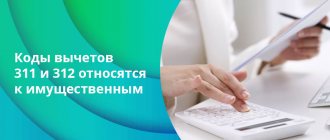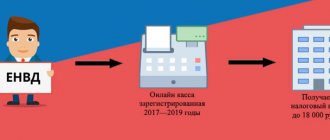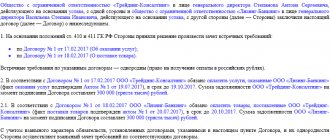Photo: pixabay.com Updated: 03/27/2020
Tax deduction for medical services and medicines is one of the types of social support from the state. By paying for your treatment, your parents or children, you can get back part of the costs incurred. To receive a tax deduction, you need to contact your employer or the tax office.
A tax deduction is not a benefit, but an opportunity to reduce the amount subject to income tax (NDFL). If a citizen does not work and does not pay personal income tax, then he cannot receive this deduction.
The amount of the deduction cannot exceed:
- The maximum amount of deduction established by law for 1 calendar year. The only exception is a separate list of expensive types of treatment, for which there are no restrictions on the amount of tax deduction
- The amount of income received by a citizen during a calendar year
Who is entitled to a tax deduction for treatment and medicines?
A social tax deduction for treatment can be received by a citizen who has paid (clause 3, part 1, article 219 of the Tax Code):
- Medical services provided to family members: Yourself
- To the spouse
- Parents
- Children under 18 years of age: relatives, adopted children and wards
A deduction for treatment and medications can be received along with other social payments, for example for education.
Social tax deduction for education
The tax deduction is of a declarative nature, so reimbursement of expenses does not occur automatically; in order to receive them, you need to collect the necessary documents and contact your employer or the tax office.
Maximum tax deduction for treatment
120,000 rubles (refundable 120,000 x 13% = 15,600 rubles) is the maximum tax deduction for treatment and medicines (Article 219 of the Tax Code), except for expensive types of treatment that do not have a maximum value.
The maximum amount also includes other social tax deductions provided to a citizen and his family members:
- Contributions to the funded part of the labor pension
- Voluntary pension insurance
- Non-state pension provision
- Voluntary life insurance
- Pay for your own education (without children)
Education of children is not included in the maximum amount; for education of children there is a separate deduction limit of 50,000 rubles for each child.
For which medical services is a tax deduction available?
Of course, the full list of such medical services is wide, so we invite you to get acquainted with the main ones, taking into account Government Decree No. 201 of March 19, 2001:
- Range of diagnostic/treatment services to the population within the framework of emergency medical care.
- Diagnostics, as well as prevention, rehabilitation, treatment within the framework of outpatient care to the population. This also applies to day hospitals and general practitioners, as well as medical examinations.
- Diagnostics, as well as prevention, rehabilitation, treatment within inpatient care. This also applies to day hospitals.
- Diagnostics, as well as prevention, rehabilitation, treatment as part of the assistance provided in sanatorium-resort institutions.
- Health education.
You can clarify all questions directly at the medical institution. It is also worth considering the list of expensive types of treatment that allow you to receive a deduction without a limit of 120,000 rubles in accordance with the Resolution already mentioned above:
Surgical intervention for the purpose of treatment in patients:
- Developmental defects
- Severe and advanced forms of circulatory system diseases
- Severe and advanced forms of respiratory diseases
- Severe and advanced forms of eye diseases and pathologies
- Severe and advanced forms of nervous system diseases.
- Complicated forms of diseases of the digestive system
- Endoprosthetics
- Joint surgeries
- Tissue/organ/bone marrow transplantation
- Replantation and implantation
- Operations, reconstructive, plastic and their symbiosis
Therapeutic treatment:
- Diseases transmitted by inheritance
- Chromosomal disorders
- Malignant neoplasms of the endocrine glands
- Acute inflammatory polyneuropathies
- Complications of myasthenia gravis
- Connective tissue lesions
- Severe and advanced forms of diseases in children of the circulatory, respiratory and digestive organs
Combination treatment services:
- Pancreas
- Malignant neoplasms
- Inherited bleeding disorders and aplastic anemias
- Osteomyelitis
- Conditions complicated by pregnancy, childbirth and the period after childbirth
- Complicated forms of diabetes mellitus
- Severe forms of diseases and pathologies of the eye
- Burns (30% of the body or more)
And:
- Use of hemo- and peritoneal dialysis
- Care for premature babies
- Infertility treatment
How to calculate tax deduction for treatment
If during a calendar year a citizen paid for his education, treatment of children and medicines for his parents, while the amount of expenses is higher than the established maximum, then he has the right to choose for what types of expenses and in what amount a social tax deduction will be provided.
Example 1: Nikolay earned 700,000 rubles in a year. During the year, he paid for: treatment of the parents - 100,000 rubles, education of the child - 50,000 rubles, insurance premiums under the traffic police agreement - 50,000 rubles. The amount of expenses was: 200,000 rubles. Despite the fact that Nikolai’s salary allows him to deduct all expenses, he can only take advantage of the deduction for the maximum amount established by law for 2020 of 120,000 rubles. As a result, Nikolay will receive: 120,000 x 13% = 15,600 rubles.
Example 2: Let's take all the data from example 1 and replace Nikolai's salary with 90,000 rubles per year. In this situation, Nikolay will be able to receive a deduction only for 90,000 rubles, which will be: 90,000 x 13% = 11,700 rubles.
What kind of treatment can I get a child tax deduction for?
The deduction for a child is exactly the same as for any family member, including the citizen himself.
Social tax deduction can be obtained when paying for:
- Medical services: Diagnostic services as part of emergency care
- Consultations for expectant mothers
- Prevention, diagnosis, treatment and rehabilitation - in clinics, hospitals and sanatorium institutions
Income tax is not reimbursed if treatment or medicines are paid for by an organization (employer, charitable foundation).
Purchased medical goods and services must meet the following requirements:
- For medical services: their presence in the List approved by the government
- availability of a medical license from the organization providing treatment
- medications prescribed by the attending physician
- the contract provides for payment only for medical services
Who is entitled to receive it
It can be received by a person who has spent money on his treatment or the purchase of medications prescribed by a doctor. Such expenses include both the services of medical institutions and the cost of purchasing necessary medications. The main thing is that treatment services and the names of purchased medications are named in special lists. This:
- List of medical services in medical institutions in Russia;
- List of medications prescribed by the attending physician.
Both lists were approved by the same document - Decree of the Government of the Russian Federation of March 19, 2001 No. 201.
If the medical services provided to you are not on the list, then you are not entitled to claim a deduction. Your treatment costs will not be taken into account. A similar rule applies to drugs and medications. The cost of medications not mentioned in the list is not taken into account as deductible expenses. True, a deduction can be obtained if the trade name of the drug is not on the list, but the drug included in its composition is on the list. For example, you can take advantage of the deduction by purchasing Enzistal or Panzinorm tablets. Despite the fact that these drugs are not on the list, they contain pancreatin, which is on the list (letter of the Ministry of Finance of Russia dated July 19, 2015 No. 03-04-07/35549).
Please note that the list of medical services is quite wide. It includes services for diagnosis, prevention, treatment and rehabilitation of any disease when providing:
- emergency medical care (ambulance treatment);
- outpatient and outpatient care (treatment in the clinic and at home);
- inpatient medical care (treatment in hospital).
Another important point. Expenses for treatment services can only be taken into account if the medical institution where they were provided to you has a license for medical activities and this organization is registered in Russia and not abroad. Therefore, for example, it will not work to include the costs of spa services in expenses, presenting them as “therapeutic”. As a rule, such salons do not have a “medical” license. It will not be possible to include health costs abroad in expenses.
The right to this deduction appears both when paying for your own treatment and when paying for treatment:
- each of your children under the age of 18;
- spouse;
- parents (father or mother).
In this case, the deduction includes the costs of medical services and the purchase of medicines for these persons.
Summarize. The person who paid for treatment and medications has the right to a deduction:
- directly for yourself;
- for your child under 18 years of age;
- for your spouse;
- for your parents.
Expensive treatments for tax deduction
If the treatment is included in the List of Expensive Treatments, then the deduction is made for the entire amount spent, not limited to the maximum amount (120,000 rubles), but does not exceed the amount of income received by the citizen during the calendar year.
Example 3: The father earns 35,000 rubles per month, which is 420,000 rubles per year, from which he pays personal income tax: 420,000 x 13% = 54,600 rubles. This year, he paid for a medical operation for his child in the amount of 500,000 rubles. Since the operation is included in the list of expensive ones, the amount of deduction is not limited to 120,000 rubles. But it is limited to the income received during the year, i.e. instead of 500,000 x 13% = 65,000 rubles, the father will be able to return only 54,600 rubles.
You can determine whether treatment is expensive using the code in the certificate of payment for services issued by a medical organization:
- Code 1 - treatment is not expensive
- Code 2 - treatment is expensive
You can receive a deduction when purchasing expensive consumables if all the conditions are met:
- The certificate of payment for medical services contains code 2
- Materials were purchased for expensive treatment
- The treatment contract states that these consumables are purchased at the citizen’s expense
- There is a certificate indicating that the purchased consumables were needed for expensive treatment
justice pro...
You learned about the possibility of returning tax for medical services, and now you are interested in the question of the amount of tax deduction for treatment. Next, we will tell you how much you can return, how to calculate the refund amount, what percentage and maximum deduction amount, the restrictions and limits of tax refunds, and also offer an example of calculating a personal income tax refund.
Tax deduction for treatment: how much?
First you need to understand what a tax deduction is. A tax deduction is a reduction in the tax base. For an individual, this means the tax base for personal income tax (personal income tax). The tax deduction for medical services (medicines, voluntary health insurance) applies only to income that is taxed at a rate of 13 percent (for example, income in the form of wages, income from renting an apartment, etc.). Unemployed and unearned citizens cannot apply for a deduction on their own (for example, non-working pensioners).
Thus, the amount of tax deduction for treatment reduces the tax base for personal income tax. As a result, the amount of income tax is reduced. When receiving a tax deduction for treatment
- through the tax office, part (or the entire amount) of the personal income tax previously withheld for the year is returned (documents are submitted at the end of the year in which payment for treatment took place, the money is transferred after a few months);
- Through the employer, personal income tax ceases to withhold from wages for a certain number of months, as a result of which you receive wages in your hands without withholding income tax.
Please note that a social tax deduction for treatment (if the statute of limitations has not passed) can be obtained for your own treatment, as well as when paying for the treatment of some relatives (family members).
Amount of tax deduction for treatment: how much interest can be returned
As we found out, the amount of tax deduction for treatment is not the amount that you can receive in your hands, but the amount that reduces the tax base for calculating personal income tax.
How much interest can I get back for treatment?
The tax refund for treatment will be 13 percent of the tax deduction amount (13 percent is the personal income tax rate).
The size of the social deduction for treatment is determined by the taxpayer’s expenses for medical services provided to him personally, his spouse, parents, and children (but with some restrictions).
Thus, when applying for a tax deduction for treatment, the refund amount will be 13 percent of the cost of medical services (the maximum amount and the limit established by the state will be discussed below).
How the amount of tax deduction is affected by the type of treatment you paid for
How much you can get back for treatment from the tax office depends on what medical services you paid for, as well as on the amount of your income.
The fact is that in order to obtain a tax deduction for treatment, all medical services are divided into expensive treatment and medical services (the so-called “ordinary”, “low-cost” treatment). To classify treatment as expensive, the determining factor is not the cost of medical services, but its inclusion in a special list of expensive types of treatment.
Expensive treatment corresponds to service code 2, indicated in the certificate of payment for medical services. If you paid for treatment that is not expensive, the certificate of payment for medical services will indicate service code 1.
According to Article 219 of the Tax Code of the Russian Federation:
- for expensive types of treatment, the amount of tax deduction is accepted in the amount of actual expenses incurred;
- for medical services (except for expenses for expensive treatment), a deduction for treatment is provided in the amount of actual expenses incurred, but in total no more than 120,000 rubles for the tax period.
If, in addition to the social deduction for treatment, you want to receive a social deduction for your education, the education of your brother/sister, life insurance, then in this case the limit is 120,000 rubles. is also established for expenses for treatment (according to service code 1), life insurance and education expenses (a different limit is provided for a child’s education).
Maximum tax deduction for treatment
Depending on what treatment you paid for, the maximum amount of tax deduction for medical services (the amount that reduces the tax base for personal income tax) will be equal to:
- 120,000 rub. – the limit of tax deduction for treatment when paying for medical services not included in the list of expensive types of treatment,
- actual treatment costs – when paying for expensive medical services.
The maximum tax refund for treatment (the amount you can receive) will be:
- 15600 rub. – limit on personal income tax refunds for treatment when paying for medical services not included in the list of expensive types of treatment (13% of the legal limit of 120,000 rubles).
Example 1. For a year, treatment was paid for (service code 1 in the certificate of payment for medical services) in the amount of 160,000 rubles. Income for the year amounted to 600,000 rubles, the tax amount was 78,000 rubles. Because “inexpensive” treatment was paid for, the limit on the amount of tax deduction for treatment will be 120,000 rubles. and you will be able to return only 15,600 rubles (120,000 * 0.13).
- 13 percent of the cost of treatment when paying for expensive medical services.
Example 2. In the year under review, expensive treatment was paid for (service code 2 in the certificate of payment for medical services) in the amount of 380,000 rubles. The amount of income for the year is 600,000 rubles, the amount of tax is 78,000 rubles. Because expensive medical services were paid for, the amount of tax deduction for treatment is accepted in the amount of actual expenses incurred - 380,000 rubles. The amount of personal income tax refund for treatment will be 49,400 rubles. (13 percent of 380,000 rubles).
How much tax can be refunded for treatment: income limit
When receiving a tax deduction for treatment, part or all of the personal income tax withheld for the year is returned. Accordingly, it is impossible to return more tax than was previously withheld. It should be taken into account that the deduction for medical services cannot be transferred to other periods.
Example 3. The amount of income for the year is 200,000 rubles, the amount of tax is 26,000 rubles. 240,000 rubles were spent on expensive treatment, but because... the limitation of the tax deduction is the income received, then in this example the maximum amount of personal income tax refund for treatment will be the previously withheld tax - 26,000 rubles.
To return the maximum possible amount for treatment in the case of a registered marriage, you can distribute the deduction between spouses.
To determine the maximum tax refund amount for treatment, you need to know what treatment you paid for, as well as the amount of your income
How to calculate tax deduction for treatment
So, in addition to the cost of paid medical services, the size of the tax deduction for treatment is affected by:
- the amount of your income,
- what treatment was paid for - expensive or not.
If you want to find out how much you can return for treatment, you need the following data: the amount of income and the amount of tax withheld (from the 2-NDFL certificate issued at work), the cost of medical services by service code 1 and by service code 2 (data from certificates on payment for medical services).
Below is the calculation of the tax deduction for treatment (tax refund) in case of a tax refund for your treatment and the treatment of your child.
The amount of income is 600,000 rubles,
The amount of tax withheld is 78,000 rubles,
Cost of treatment for the taxpayer himself:
100,000 rub. (service code 1),
300,000 rub. (service code 2).
The cost of treating a child (service code 1) is 40,000 rubles.
In a simplified form, an example of calculating a deduction for treatment may look like this:
- the cost of treatment for service code 1 will be 140,000 rubles. (100000+40000). Because There is a tax deduction limit for treatment (for low-cost medical services) of 120,000 rubles, and in this case it is exceeded, then you can return a maximum of 15,600 rubles. (13% of the limit of 120,000 rubles);
- Let's calculate 13 percent of the cost of expensive treatment. 300,000 * 0.13 = 39,000 rubles.
- Let's calculate the total amount of tax refund (for ordinary and expensive treatment) 39000 + 15600 = 54600 rubles.
- the tax withheld for the year is greater than the estimated amount of the refunded tax (78,000>54,600), so in this example, you can return the full 54,600 rubles.
In a similar way, you can calculate the amount of social tax deduction for treatment, for example, for the following medical services:
- dental treatment (including prosthetics, installation of implants, braces, etc.),
- tests,
- doctors appointment,
- ECO,
- management of pregnancy, childbirth,
- examination, diagnostics (ultrasound, MRI, x-ray, etc.),
- operations,
- treatment in a sanatorium,
- other treatment.
You can get back 13 percent of the cost of medical services, but you should be aware that the amount of the tax deduction for treatment depends on the amount of income and whether the treatment is classified as expensive.
Posted by:
Ralenko Anton Andreevich
Moscow 2018
How to get a tax deduction for treatment
After treatment or medications are fully paid for, a citizen can apply for a deduction. For deductions, you can contact either your employer or the tax office. You can contact your employer immediately after payment, but you can contact the tax service only after the end of the calendar year.
If the employer was in charge of paying the deduction, but at the end of the calendar year the deduction was not fully used, you can contact the tax office for the remaining part of the deduction.
Applying for a deduction to the tax service
At the end of the calendar year, you need to collect a package of documents, fill out a tax return and contact your local tax office. The package of documents must include: documents confirming the right to receive a tax deduction, as well as confirming the costs of treatment and medications.
Appeal to the employer for deduction
When applying for a tax deduction to an employer, he will do all the main work, acting as a kind of tax intermediary. But before contacting the employer, you still need to visit the tax office and provide the necessary documents. After checking the documents, the tax office will issue a notification, which will be the basis for assigning a deduction at the place of employment.
If you contact your employer for a deduction, you do not need to fill out a tax return and take a 2-NDFL certificate. And the deduction is made from the month of filing the application (with notification from the tax office).
Two ways to get a deduction
There are two options. First, you need to contact your employer with a request for a deduction. In addition to the application, you will need special paper - notification of the right to deduction. It must be obtained from the tax office. In this case, income tax will either not be withheld from you at work or will be withheld in smaller amounts.
The second is to get a deduction from the tax office. To do this, you need to submit a 3-NDFL declaration and copies of documents that confirm treatment expenses to the inspection. In this case, you will be refunded the overpaid tax to the account you specified. The second method is used most often.
Documents for tax refund for treatment
A package of documents required when contacting the tax service:
- Tax return in form 3-NDFL ()
- Write an application for a tax refund, if there is an amount in the tax return, for a tax refund in connection with training expenses
- Certificate of employment in form 2-NDFL ()
- Child's birth certificate (documents on guardianship or trusteeship)
- Treatment agreement (with annexes and agreements)
- Certificate of payment for medical services issued by a medical organization
- A certificate from a medical institution indicating that the purchase of medicines (consumables) at the expense of the citizen was necessary for expensive treatment
- Prescription form issued by the attending physician
- Voucher stub - when receiving medical services in a sanatorium-resort institution
- Payment documents for payment for treatment and medicines (cash receipts, cash receipt orders, payment orders)
When submitting copies of documents, you must have their originals with you.
To receive a deduction for treatment under a VHI agreement, you need a copy of the VHI agreement or the DSW medical insurance policy, as well as receipts for the insurance premium.
When and for what period can a tax deduction for treatment be returned?
Social tax deduction can be obtained through the tax service within 3 years from the date of payment for medical services or purchase of medicines (Part 7 of Article 78 of the Tax Code). But the amount to be refunded is calculated based on the salary received for the same year in which payment for treatment and medications was made. If the annual income was less than the amount to be deducted, then the remaining portion will be lost.
The refund occurs within 1 month from the date of filing the application, but not earlier than the completion of the desk tax audit (Part 6 of Article 78 and Part 2 of Article 88 of the Tax Code). The desk audit is carried out within 3 months from the date of receipt of the documents. If violations are detected, then within 15 working days after its completion, the taxpayer receives an inspection report, otherwise the inspection is completed automatically without notifying the citizen.
Example 4: A father paid for his child’s dental treatment in June and immediately contacted the tax office for notification. A month later, he received a notice from the tax office, and in June he began receiving a salary increase at his place of work.
Deduction for treatment in 2020 and 2020
You need to keep in mind that you are not getting back the money you spent on treatment or buying medicines, but part of the income tax that you paid to the budget during the year. This tax, for example, is withheld from your salary at work. More on this below. Therefore, in order to qualify for a medical deduction and a refund, you need at least:
- spend your own money on treatment;
- pay personal income tax throughout the year.
Therefore, some categories of citizens cannot receive a deduction and return part of the funds spent on treatment. For example, unemployed students or pensioners. They generally do not receive taxable income. Consequently, they do not pay income tax and there is simply nothing to return to them.












